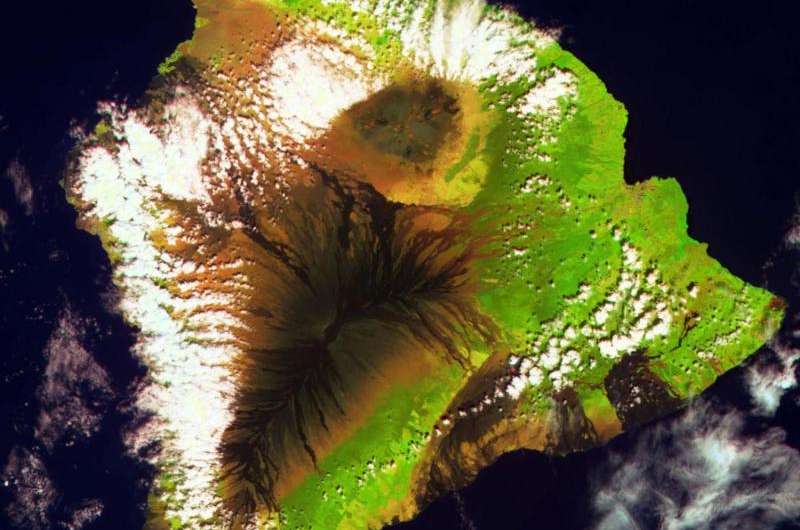Image: Proba-V view of Hawaii

ESA's Proba-V minisatellite gazes down at Earth's largest volcano – Mauna Loa, or 'long mountain' which covers half of the island of Hawaii.
Mauna Loa remains active, having last erupted in 1984. To the north of its distinctive blackened ridges is the still-higher Mauna Kea volcano – an extinct volcano whose crests are home to some of the world's leading astronomical observatories.
To its east is the very active Kilauea volcano, which has been erupting for more than three decades, the Hawaii Island being formed of five volcanoes altogether. The island's forest reserves are shown in green.
Mauna Loa stands 4169 m above sea level, and extends another 5 km beneath the sea. Its 75 000 cubic km volume depresses the adjacent sea bed another 6 km or so. This Proba-V image was acquired on 19 February this year with a resolution of 100 m.
Launched on 7 May 2013, Proba-V is a miniaturised ESA satellite – less than a cubic metre – tasked with a full-scale mission: to map land cover and vegetation growth across the entire planet every two days.
Its main camera's continent-spanning 2250 km swath width collects light in the blue, red, near-infrared and mid-infrared wavebands at 300 m resolution and down to 100 m resolution in its central field of view.
VITO Remote Sensing in Belgium processes and then distributes Proba-V data to users worldwide. An online image gallery highlights some of the mission's most striking images so far, including views of storms, fires and deforestation.
Provided by European Space Agency





















